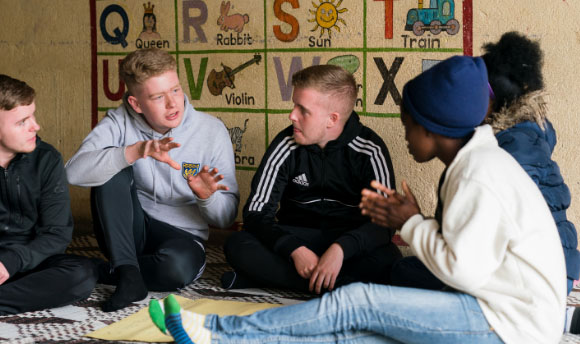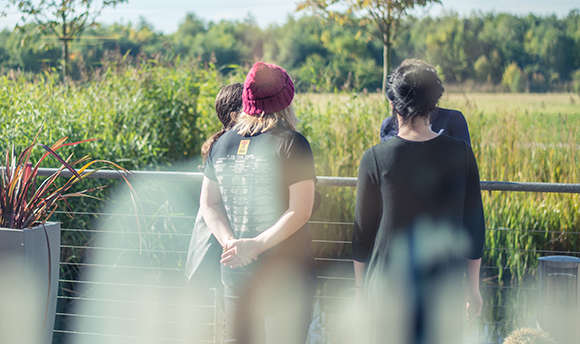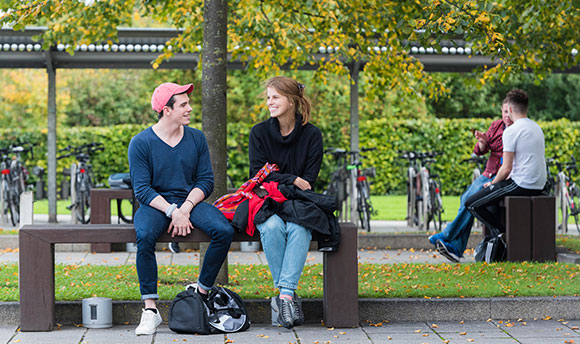Linda Ferry – Podiatry – Level 4
Athens, Greece
The Podiatry Department at the Metropolitan College in Maroussi, Athens welcomed Queen Margaret academic staff and students on their short overseas academic trip. This was a very interesting and informative collaboration between the two institutions which was initiated by the QMU Podiatry team and led by Mr. John A. Veto and Miss Carla McArdle. As a new graduate this trip was such a lovely and memorable way to finish my BSc. (Hons) Podiatry degree. I certainly learned a lot from this visit and I am thankful to have been given the opportunity to experience this International collaboration.
As I begin my transition from university into private practice there are additional elements relating to podiatry that I have recognised throughout this experience which has sparked such an interest and I will endeavour to pursue these as my experience develops.
There is no doubt that this trip has been an informative, memorable and worthwhile experience.
On arrival we were given an introductory tour of the podiatry department, which included the student treatment clinic and cafeteria, both of which provided a spectacular view of the city. The clinic was small and bright.
Throughout our first day in the clinic we observed, interacted and exchanged views with second year students on the BSc (Hons) Podiatry degree course in Athens whilst conducting their routine care clinic, which involved discussions between students and staff on whether we observed significant differences between treatment techniques and student/patient interaction.
Communication between the majority of students and staff was generally very good.
GAIT & MOTION ANALYSIS LAB – ELEPAP
A highlight of the trip for me was our visit to the gait analysis laboratory. We were all lucky to be given the opportunity to observe a gait analysis procedure from start to finish.
ELEPAP operates six fully equipped centres in Greece with facilities for children from infancy to school age.
The Gait Analysis is a biomechanical measurement which allows recording and objectively assesses the walking ability of the patient. It is based on videos, computers, force platforms and electromyographs. Special software then converts the images of gait in three-dimensional animation. Trajectories, displacements, velocities, accelerations and angles of the body are calculated automatically. The forces applied to the ground during gait are recorded from the force platforms that have been fitted to the runway walk.
The muscle activation is recorded using EMGphy.
The measurement procedure is a standard procedure and can be repeated for comparison.
The purpose of Gait Analysis is to diagnose and evaluate the progress of conservative treatment; the effectiveness of the use of drugs (e.g. Botulinum toxin); the necessity and effectiveness of surgery when conservative treatment does not provide the expected results and also the evaluation of orthotics.
Conditions where Gait Analysis can be helpful include:
- Cerebral Palsy
- Cerebral dysfunction
- Myelodysplasia
- Craniocerebral injuries
- Spinal cord and peripheral nerve injuries
- Myopathies
- Parkinson’s disease
- Unequal limb length
- Twisting deformities of the limbs
It was a lovely and very interesting tour of this centre and to see and hear of the progress that has and is being made. I will remain interested in this centre and will continue to follow its progress in the future.
LOCAL ANAESTHETIC TUTORIAL – JOHN VITO/CARLA McARDLE
The following snaps depict John administering a digital local anaesthetic – a procedure that students will be expected to perform as part of an examination, albeit on a rubber toe. It was thought that the best way to demonstrate this procedure was by using a guinea-pig. Carla volunteered and before she could change her mind she was practically pinned to the plinth with a dozen or so students surrounding her. Her face says it all…..
The students thoroughly enjoyed the tutorial and asked a whole range of questions, for example:
- what happens if…
- the needle breaks?
- the patient has a reaction to the anaesthetic?
- the patient changes their mind after the anaesthetic?
and
- how long does the tourniquet stay on?
- how do we calculate how much anaesthetic has been used?
- why do we not use adrenaline?
Carla included a presentation for the students to follow and an interesting discussion took place between the two sets of students. The Greek students found this very helpful and beneficial for their pending exam. I felt a sense of satisfaction knowing that my knowledge as a fourth year student was welcomed and benefited the second year students.
ORTHOTICS SEMINAR
An interesting discussion at this seminar highlighted differences of opinions in methods used to obtain accurate information to provide suitable orthotics in an attempt to correct gait problems. The range of knowledge between the students was quite evident according to the questions being asked and the explanations given.
Of course, although we were all kept very busy, we still enjoyed some leisure time…..







